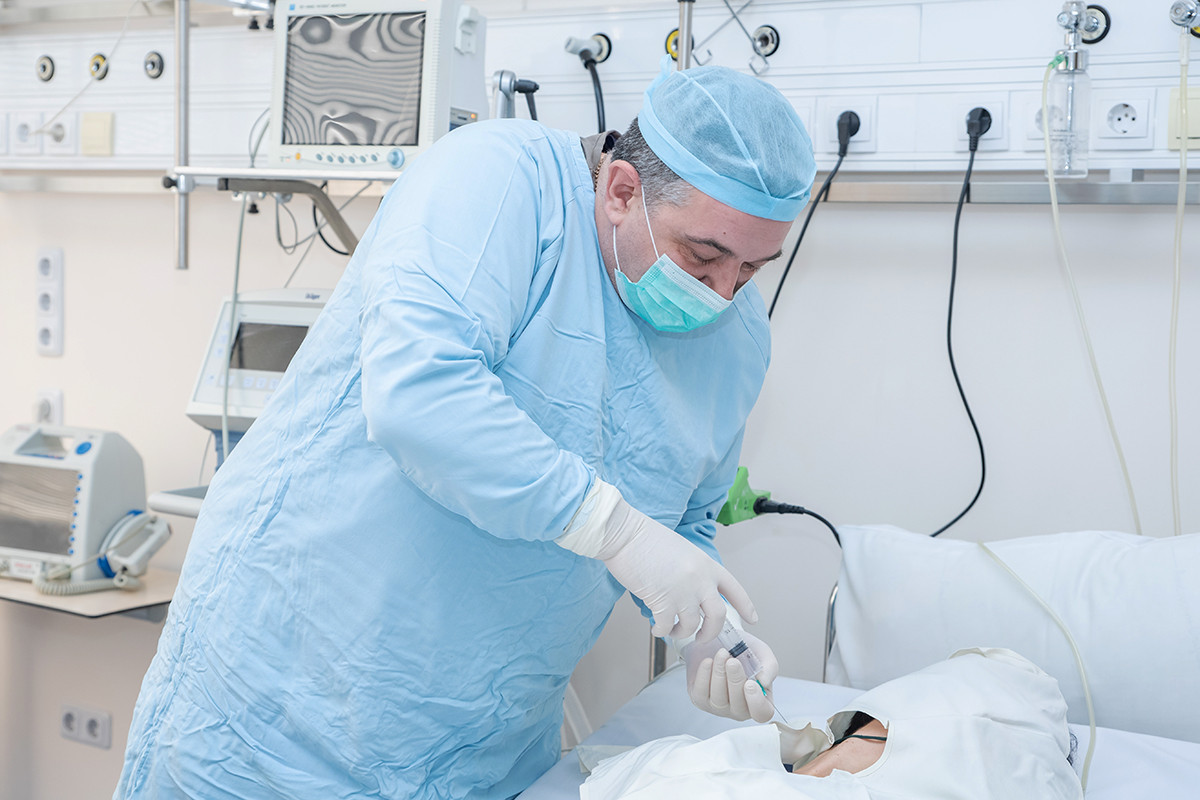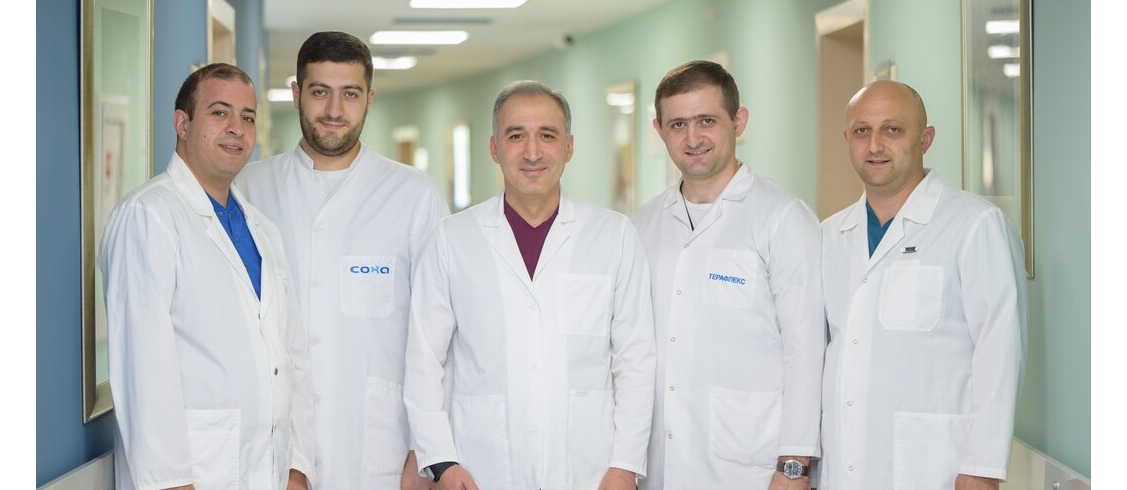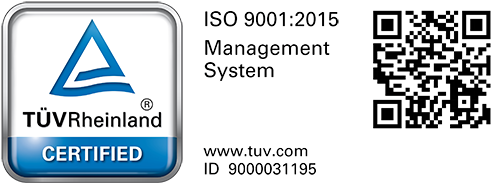 Anesthesia
Anesthesia
Provides anesthesia for all operations, surgical procedures and interventions, which includes the use of modern methods of anesthesia such as general multicomponent anesthesia, including single lung ventilation, placement of a laryngeal mask, intravenous anesthesia, spinal, epidural, locoregional anesthesia and their combination i. e. general - epidural, general - locoregional, spinal - epidural, spinal - locoregional anesthesia.
In order to assess the patient’s general condition, determine the method of anesthesia and prepare the patient for surgery, anesthesiological pre-operative examination is carried out by AIT doctors, during which the degree of anesthesiological risk of the patient is assessed according to ASA and the difficulty of endotracheal intubation according to the Mallampati scale. Taking into account the form, volume, length of the surgical intervention, general condition of the patient, anesthesiologist-reanimatologist determines the type of anesthesia.
Severe endotracheal intubations are performed with the greatest care, in such cases special equipment is used i. e. bronchoscope, Air Traq, laryngeal mask, I-gel tubes, various explorers, etc. To ensure the patient's intraoperative safety, constant monitoring of vital indicators such as invasive or non-invasive measurement of arterial pressure, electrocardiography in various outputs, saturometry, thermometry, determination of breathing frequency, the amount of inhaled and exhaled gases O2, CO2 and anesthetics is performed.
Early postoperative period i. e. two hours after the end of the surgery, patients are transferred to the intensive care unit, where they breathe oxygen and are under constant monitoring and control. Particular attention is paid to the pain relief of the patients in the postoperative period, which is carried out by injections of various drugs, long-term epidural analgesia and locoregional anesthesia.
The use of the latter provides long-term pain relief in various parts of the operated body and limbs by blocking of various nerves and nerve plexus, which is carried out under aseptic conditions and ultrasound control. Among locoregional pain relief methods, the service provides TAP, PENG, PENG-LFCN, ESP, Adductor canal, Brachialis, Interscalene, Pudendal, PECS I-PECS II, Popliteal Sciatic, Fascia iliaca, Clavipectoral Fascia and other block types.
Anesthesiology service also provides anesthesia for minor invasive procedures and examinations such as ophthalmology, gastroscopy, colonoscopy, cystoscopy, abrasio cavi uteri, MRT, Computer tomography, etc. Most of them are performed under intravenous anesthesia and the patients breathing on their own.
The anesthesiology service includes the anesthesia of pediatric patients for ear-nose-throat, ophthalmology and bone surgery, as well as during MRT and Computer tomography examinations.
Availability of medical devices
- Drager Fabius plus XL anesthesia machine (Sevoflurane, Isoflurane)
- Drager Vista 120 multifunctional invasive and non-invasive monitors
- Scio Four Oxi plus gas analyzer
- Schiller Defigard 5000 cardioverter-defibrillator
- centralized supply of oxygen, compressed air and vacuum system.
 Intensive care and resuscitation
Intensive care and resuscitation
The intensive therapy and resuscitation service carries out cardiopulmonary resuscitation of hospitalized or admitted patients with cardiac and respiratory arrest, as well as anti-shock operations, intensive therapy and resuscitation of surgical and somatic patients in severe and extremely severe condition i. e. prosthetics and restoration of vital functions of the body, constant round-the-clock monitoring and care of patients, sanitary processing, prevention of bedsores, transportation of severe and extremely severe patients under artificial respiration for the purpose of performing diagnostic examinations and surgical interventions.
The service carries out
- Cardio-pulmonary resuscitation measures, restoration of heart rhythm in case of arrhythmias, medication, defibrillation, cardioversion, installation of a temporary pacemaker
- use of long-term invasive artificial ventilation of the lungs
- use of non-invasive artificial ventilation of the lungs
- transcutaneous dilatation and traditional tracheostomy
- sanitary and diagnostic bronchoscopy
- gastrostomy tube placement
- required laboratory diagnostic and instrumental examinations (Ultrasound, gastroduodenoscopy, colonoscopy, sonography, echocardiography, duplex scanning of vessels, X-ray examination, general, biochemical, microbiological, blood gas analyses)
- monitoring of basic parameters of breathing, peripheral and central hemodynamics
- puncture and catheterization of the main vessels (subclavian, jugular or femoral veins)
- pleural cavity puncture and drainage
- subdural puncture
- early rehabilitation measures for patients in critical condition
Availability of medical devices
- Drager Drager Savina 100 and Drager Savina 300 stationary ventilators
- Newport portable ventilators
- Drager Vista 120 multifunctional invasive and non-invasive monitors (invasive and/or peripheral blood pressure, electrocardiography in various discharges, saturometry, thermometer, determination of respiratory rate and exhaled carbon dioxide’s amount)
- Non-invasive monitor -Massimo Radical 7
- Schiller Defigard 5000- defibrillator-cardioverter
- Anti bedsore mattresses for the patients with high risk of it
- Centralized supply of oxygen, compressed air and vacuum system
- Portable oxygen cylinders
Partners
- Anesthesia, resuscitation and intensive care department of "Erebuni" Medical Center, Yerevan, Armenia
- Departement d'Anesthesie-reanimation, Hopital Prive Nord Parisien.





 Anesthesia
Anesthesia Intensive care and resuscitation
Intensive care and resuscitation


